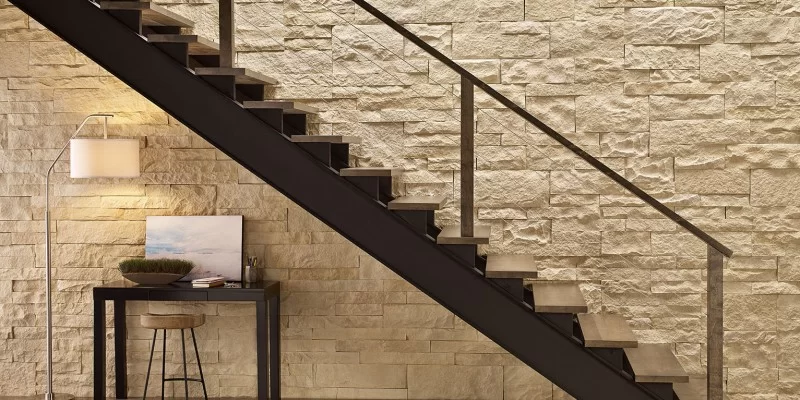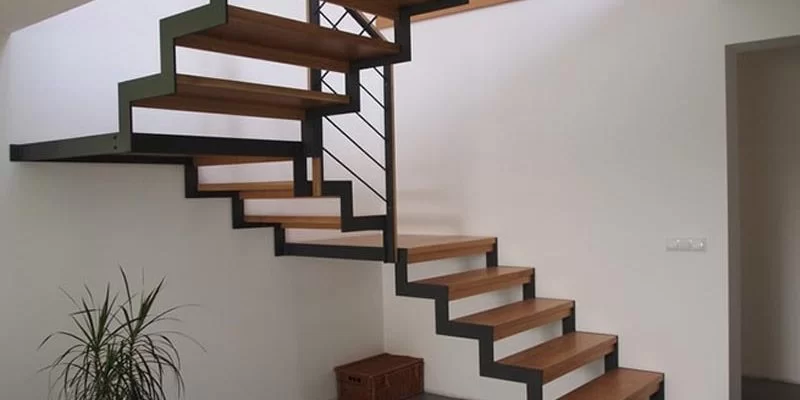Marching structures in houses are fixed with beams. The latter refers to elements that are called kosour or bowstring. Both devices serve as the basis for stair steps, but the technology for their installation is different. What is the peculiarity of each product and is there a difference between them? This will be discussed further.
Staircase on a bowstring: manufacturing technology, features

Stairs created on bowstrings are distinguished by increased safety, since a profile made of metal or wood 5 cm thick is used for their manufacture. If necessary, steps are additionally strengthened with wedges, screws, etc. and installed in various ways.
On the inner parts of the bowstring, grooves are cut into which steps and risers are inserted. The ends of the latter are lubricated with glue, which avoids an unpleasant creak during the operation of the finished structure. The steps are attached to the string with the help of corners made of metal or wood. Those are stuffed from the inside of the bowstring. Steps are placed on top and fixed with self-tapping screws or screws. Pre-drilled special holes for the caps of the fasteners.
In the process of finishing a semi-finished staircase, the visible part of the fasteners, as a rule, is hidden with special wood / metal plugs or painted over to match the steps. Instead of wooden wedges or metal corners, plywood ribs can also be used. They will be the support for the steps.
A ladder fixed on a bowstring has a number of undeniable advantages:
-
High degree of reliability;
-
Ease of use;
-
Safety of the structure (including for significant loads);
-
Long-term preservation of the steps in cleanliness;
-
Elegant appearance.
As a disadvantage, one can single out, perhaps, only a significant width of the flight of stairs. However, given the thickness of the bowstring, a few “extra” centimeters are already included in the design.
Ladder on the stringer: manufacturing technology, features

Stairs, for which the stringer was used as the basis, are very easy to manufacture and require minimal building skills (as well as a minimal set of tools for work). What is a kosour? In simple words, this is a load-bearing beam that serves as a “foundation” for the steps of the stairs, fixed on top of it with a special comb.
Unlike stairs on a bowstring, structures on a stringer can have one element as a basis, or maybe several. When creating such products for the home, two main methods are used:
Cutouts — are made directly on the body of the beam and are most often made in a triangular shape.
Filly — special structural elements that are fixed directly on the carrier beam. The steps are directly attached to the filly. The elements are triangular in shape and are mounted on the top edge.
Stairs on the stringer have a number of advantages:
-
Withstand significant loads;
-
Differ in a compact design;
-
Suitable for limited space.
In the manufacture of stringers, thick sheet steel, a channel, T‑beams, a hollow profile (rectangular section) are used. Previously, this type of design was very popular. They are very easy to use and make. But, since they are most often made of metal, they require good welding skills.
Stringers are made of wood 7 cm thick and 30 cm wide. The most commonly used boards are made of beech, oak and other hardwoods. It is noteworthy that only glued boards are used for work, since a solid beam can crack. During the construction of the stairs, boards 5 cm thick and 30 cm wide are used. In addition to the working material, you will need a saw, drill, grinder for work.
ON A NOTE. Kosoura products are great for compact spaces. The width of the steps varies between 0.8–1 m and coincides with the width of the stairs as a whole. In a design based on a bowstring, due to the presence of two load-bearing beams, the width of the stairs will be much larger.
Comparative characteristics

Traditional summing up — our experts compared the kosour and the bowstring. Here’s what they got.
|
|
|
|
|
|
Complex toothed shape
|
Design with smooth contours
|
|
|
Fixed under stairs
|
It is fixed under the steps and also captures them from the sidewalls
|
|
|
Balusters on the steps
|
Enclosing elements are attached to a bowstring or a bar nailed to it.
|
|
|
Differs in small size
|
Takes up a significant amount of space
|
|
|
Has a very simple look
|
Has a sophisticated look
|

Добавить комментарий
Для отправки комментария вам необходимо авторизоваться.